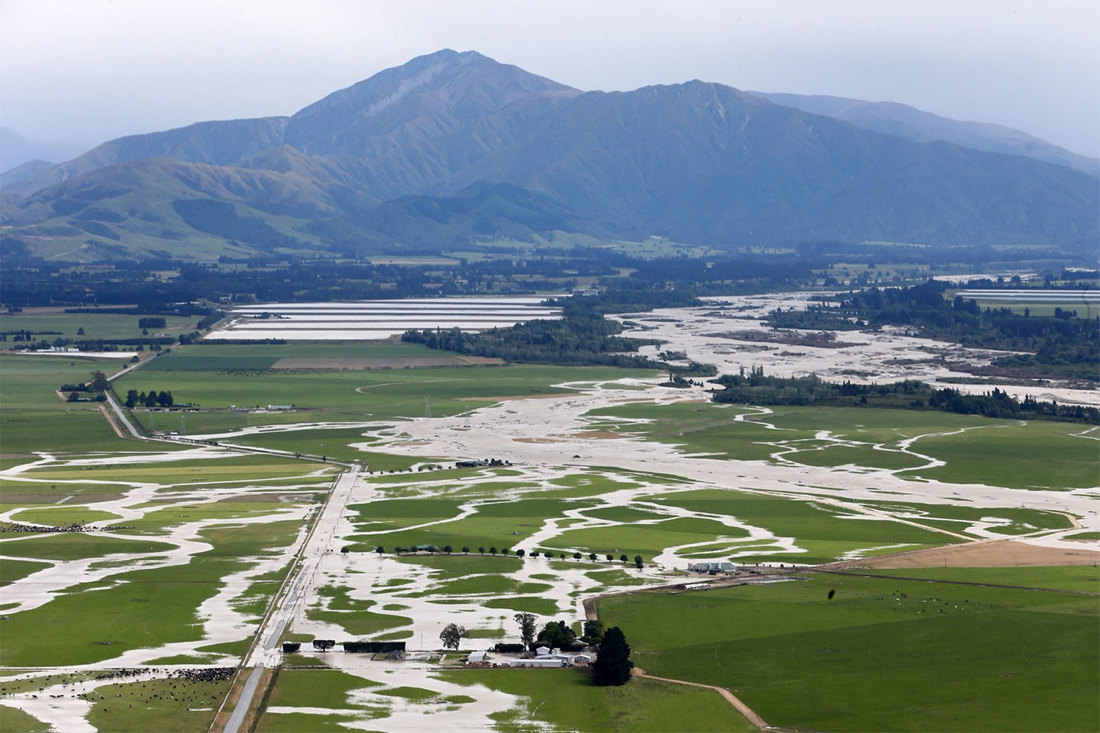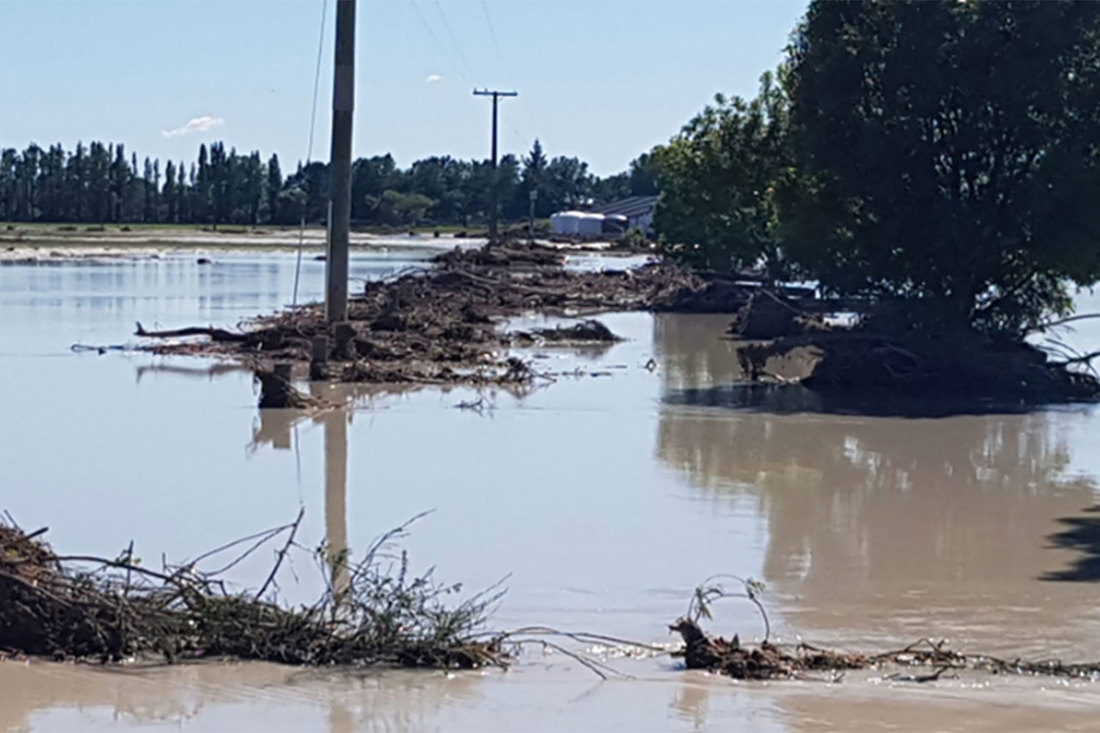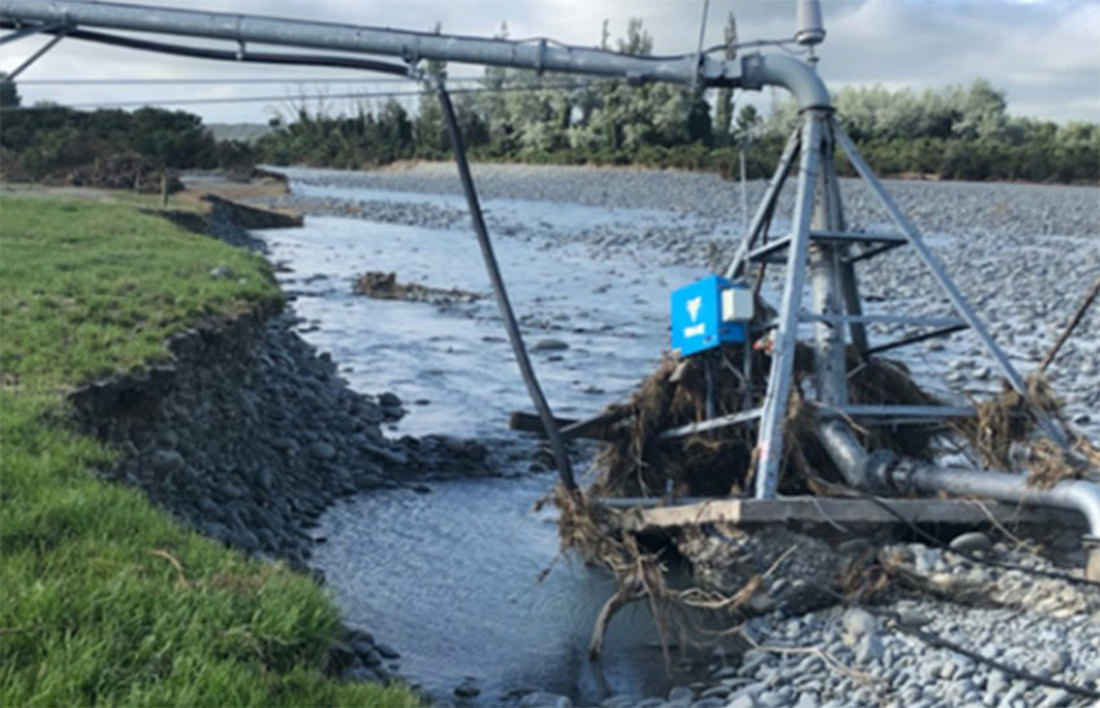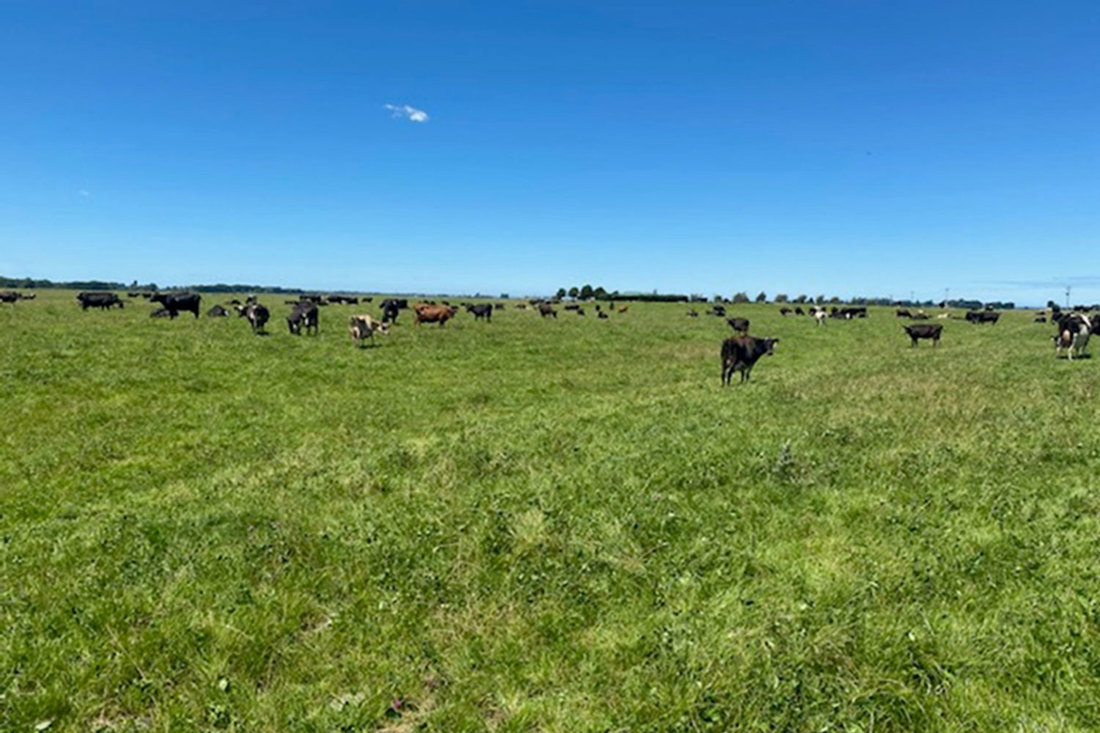Adverse events, Rangitata River Flood
4 min read
New Zealand is no stranger to periodic flooding events, and farming communities have unfortunately become familiar with the immediate and long terms impacts of heavy rain, high winds, rising rivers and surface flooding. This case study considers the learnings for a large dairy farming operation bordering the South bank of the Rangitata River, when it flooded in the summer of 2019.
Rob Wilson, at the time the farm supervisor for three impacted dairy farms of Rangitata Dairies, milking around 4,800 milking cows, remembers the events all too well.
“The early warnings were there days before the river flow sharply rose on the Saturday morning, but there was also uncertainty as to exactly where the bulk of the rain would fall. The forecast changed for the worse overnight on the Friday, with exceptional levels of rain in the high-country catchments of the Rangitata river.”

Looking west, main Rangitata river top right and one breach point with flooding across farms. Note Rangitata Irrigation Scheme ponds at top.
There was good communication leading up to and during the flooding through the existing Rangitata River Liaison Committee that Rob chaired. This included regular contacts and updates with the duty Environment Canterbury Flood Controller based in Timaru. Text alerts from the committee were used to keep farmers along the river updated. Thankfully cell phone coverage was not impacted making communication much easier.
Over the course of Saturday 7th December, the river flow levels rapidly climbed, peaking at over 2000 cumics (cubic metres/second), with the river breaking out of the main channel in at least three places. As the flooding moved eastwards across the plains, in places following previously dry riverbeds, it caused significant damage as it washed through farms, homes, across roads. The flood waters rapidly impacted and closed State Highway 1 as well as the main rail connection from Christchurch. Power transmission lines carrying power northwards were damaged although power continued to flow. Homes in the township of Rangitata were also flooded repeatedly.

State Highway 1 and Main South rail line looking south.
Timaru District Council declared a State of Emergency that morning, which remained in place for nearly a week with Civil Defence Emergency Operation Centres (EOCs) established in Geraldine and Temuka. SH1 and SH79 were closed for five days, and the rail connection was closed with sections of the line washed away.
Two breaches of the main river defences allowed flooding to come right through the middle of the farm, causing significant damage. The damage included irrigation infrastructure, water pumps, milking platforms, tanker tracks, farmhouses, fencing, farm tracks, stock water lines, and pastures as the topsoil was stripped away.

Tanker track to milking shed.
At the farm level, the Rob remembers the focus remained on ensuring everyone was safe and that all stock were moved to safety.
“We were fortunate not to lose any animals. During the initial days, you’re operating on adrenalin, but the cleanup can take months. The enormity of the situation can be quite overwhelming, so it’s vital to quickly start prioritising issues to break up the overall work into more manageable parts.”
Daily coordination meetings were used to get the farm managers and key people together. These were set at 5pm each day so not to interrupt operational work and these provided a vital opportunity to share progress across the team and build situational awareness. A log of impacts, tasks, and progress on these was updated daily and really helped both to prioritise the work, but just as importantly to see just how much was being achieved as the recovery progressed.
“Keeping track of the efforts does give you a bit of a boost when everyone is very tired. These records also help with insurance claims as they show how decisions were made and when.”

Damaged irrigator.
After people, the cows became the priority in terms of maintaining access to feed and drinking water, and milking. There is a good understanding that temporarily moving to once-a-day milking can help take off the pressure, so this was implemented where needed. Providing feed can be maintained, this change does not dramatically impact overall production. At the same time, recalculating feed requirements in the face of damaged paddocks, and finding extra feed to maintain cow nutrition was prioritised. Cows were also moved between milking platforms in some cases, which also required NAIT records to be updated to maintain good traceability.
As electrical irrigational pumps were checked before restarting to ensure further damage did not occur. There was a lot of damage to irrigation systems which took time to repair, this ultimately had a major impact on the ability to recover pastures. Considerable amounts of topsoil were also stripped in flooded areas which created a significant amount of work, to replace and re-grass. In other areas, silts were left across flooded areas that also required work. DairyNZ have advice available on their website to support flood damaged pasture management.
The support from the community and local contractors is one of the key positives Rob focused on, and how so many people and businesses supported the cleanup and recovery work. “Everyone just mucked in which was amazing!
Some key learnings that will help others prepare for future events:

Three months after flooding showing new pasture.
Now’s the perfect time to check in, plan, and set up for a strong season. We’ve pulled together smart tips and tools to help you stay ahead all winter long.
Whether you prefer to read, listen, or download handy guides, we’ve got you covered with trusted tools to support your journey every step of the way.
Put our proven strategies and seasonal tools to work. Boost production, support animal health and watch your profits hum.
Tools that are backed by science, shaped by farmers and made for this season.
That’s Summer Smarts.